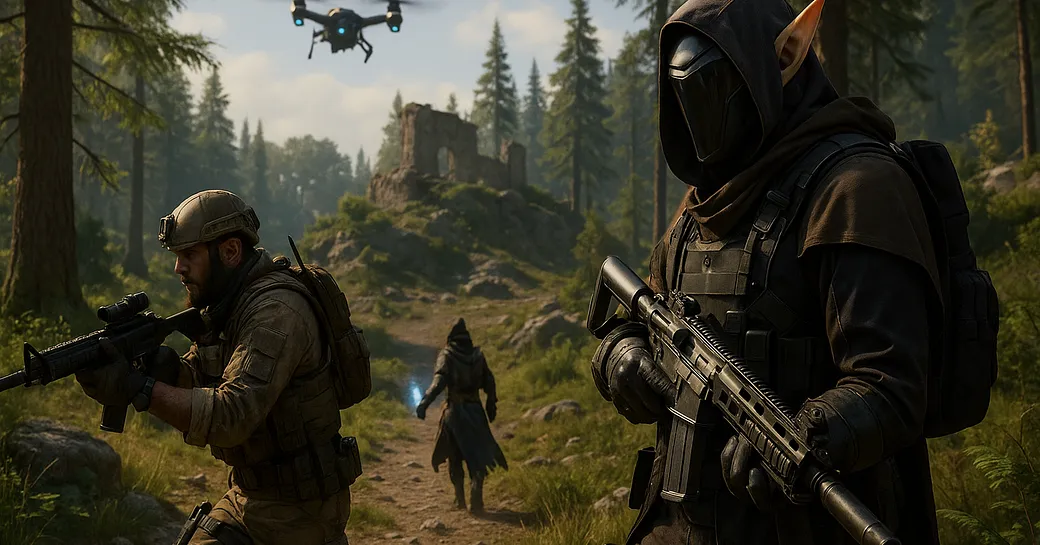About the author
Antti Kananen
Seasoned entrepreneur, executive, director, general manager & project/product lead bringing innovation, technology, startups and games to life!

Journal 14 Antti Kananen May 28
In a market increasingly saturated with live service titles and battle passes, there’s a rising countercurrent: studios opting to craft premium-first or premium-only games.
The challenge, however, is significant. How can you build a premium game that sustains itself for years, without the constant drip-feed of content updates or FOMO-inducing mechanics? The answer I’ve seen usually has been that studios opt-in for these approaches in order to build games that are fun to play, for the time they get played — and that’s kind of it. Some studios will do well with these, alone or through the partners they have; and it will be all good for them. But for most? I’d say they should take a more deeper approach, about which I’m discussing more on this article. Also, thinking about the challenges here — it’s quite exciting to provide a take on something where some doors and windows are closed, e.g., F2P, and live service.
As a product person and systems designer; and someone passionate about game economies, progression, and long-term player motivation, I believe one answer lies in applying the best systemic principles from F2P and live service models to premium-first games — without the baggage. Instead of pursuing frequent monetized events, we focus on building robust systems, meta loops, and emergent gameplay structures that allow the game to evolve, propagate, and thrive naturally, through player agency and systemic interactivity.
This article outlines how to approach such a premium-first business model from a systems design perspective, borrowing and blending best practices from various genres — like Extraction Shooters, Roguelites, MMORPGs, and 4X — and the monetization psychology of F2P/live service models. All with the goal of crafting a self-operating ecosystem of long-term engagement and value. As, if you do this right, you’ll still make plenty of business without the need to live service, or opt-in for F2P / Hybrid models.
The move toward live services has led to a reactive and frequently exploitative mindset in game development — games that are incomplete at launch, filled with short-term retention hooks, or designed to require constant intervention. This is expensive, both creatively and operationally. But a well-designed premium game can live for years without needing that.
If its systems are:
Then you have something that can propagate itself organically through community, gameplay discovery, and personal mastery.
Let’s break down how different genres and business models can inform premium-first systems design.
Genre boundaries are dissolving, and with them come rich opportunities for vector blending.
These blends allow premium games to feel infinitely more alive, interconnected, and dynamic.
To build a self-sustaining premium game, your systems need to:
When done right, your game doesn’t need live ops to remain engaging.
It evolves because:
Designing these experiences doesn’t have to mean exorbitant costs.
With clever systems design:
It’s about making systems that scale with player creativity, not just with developer effort.
Examples:
The future isn’t just (even I discuss mostly about them!) about live services or battle passes. It is also about creating games that operate like ecosystems: dynamic, player-driven, and evergreen. And, as stated first when starting this article, it’s also about just fun premium games for the time they get played — there will be space for them as well.
Through thoughtful application of systems design — pulling from F2P, live service, and diverse genres — you can craft premium-first titles that offer years of value. This will lead to proper business case, especially as any level of self-propagation would be reached, which could be driven through, well, purely from systems design side.
Approaching game development this way isn’t just sustainable; it’s creatively fulfilling. You build not just a game, but a world that players want to live in, explore, and grow with. That’s the real magic of systems thinking.
Premium doesn’t mean static. And live service doesn’t have to mean things they’re now based on. One solution is just proper take on systems design. That’s where one promising future lives. These types of games would be something I’d love to build.
About the author
Seasoned entrepreneur, executive, director, general manager & project/product lead bringing innovation, technology, startups and games to life!
Please login or subscribe to continue.
No account? Register | Lost password
✖✖
Are you sure you want to cancel your subscription? You will lose your Premium access and stored playlists.
✖